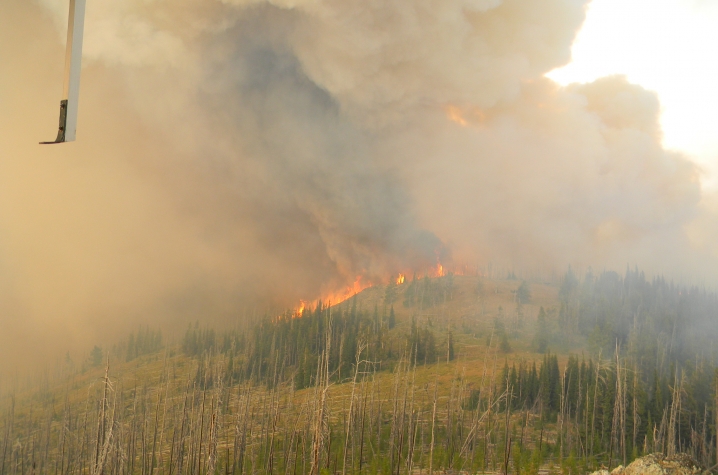New Research Findings Reveal How Wildfires Spread
LEXINGTON, Ky. (July 20, 2015) — Evidence presented in a recently released study, authored by a team of scientists from the USDA Forest Service, University of Maryland and University of Kentucky, reveals new findings about how wildfires actually spread and could have significant impacts on firefighter safety and fuel hazards mitigation.
Published in the prestigious Proceedings of the National Academy of Sciences journal, the study, "Role of buoyant flame dynamics in wildfire spread," specifically reveals how flame dynamics that produce and transport convective heat effectively governs the spread of wildfire. It was previously unclear how radiation and convection heat transfer processes, which both occur in wildfires, are organized to produce wildfire spread.
A team of 10 researchers contributed to the study, coming from the USDA Forest Service Rocky Mountain Research Station’s Missoula Fire Sciences Lab, the University of Maryland’s Department of Fire Protection Engineering, and the University of Kentucky’s Department of Mechanical Engineering.
Kozo Saito, professor of mechanical engineering and director of the Institute of Research for Technology Development (IR4TD), and Nelson Akafuah, assistant research professor of mechanical engineering, led UK's efforts. UK graduate students Brittany Adam and Justin English also worked on the project and were listed as authors on the study.
Previous studies focused mainly on radiant heat so little was known about the respective roles of convection and radiation on fire spread and most often the assumption was made that radiant heat was the governing factor. But scientists recently found that the net rates of heat transferred by radiation are insufficient because the fine fuel particles that constitute wildland vegetation cool efficiently by convection until contacted by flame.
As stated in the study, “if radiation itself is insufficient to account for fire spread…convection must provide the explanation.” So the team, led by Mark Finney of the USDA Forest Service Rocky Mountain Research Station, began looking at flame dynamics.
Utilizing specialized burn chambers and wind tunnels at the Missoula Fire Sciences Lab and the University of Maryland, scientists were able to assimilate and measure flame dynamics. They found this process can correctly scale up to those found in large-scale wildfires. They also conducted outdoor experiments and prescribed fires at Camp Swift, Texas. The experiments led to the discovery of previously unrecognized flame behaviors and how those behaviors cause wildfires to spread. They also discovered that flame vorticity (circulations) and instabilities due to the buoyancy of flame gasses, cause wildfires to spread by forcing flames downward into the fuel bed and bursting forward ahead of the fire into fresh fuel (grass, brush, etc.).
"UK has made several unique contributions to this project," Saito said.
One of those being the development of scaling laws on forest fires. An expert in the area, Saito serves as the chair of the International Scale Modeling Committee and leads a scale modeling in engineering course (ME 565) at UK.
"Another unique research capability utilized at UK was the infrared thermography imaging technique," Saito said.
This technique helped identify the detailed heat transfer mechanism taking place at the condensed fuel bed, since the traditional (point-by-point) thermocouple temperature technique was not able to measure the transient temperature map.
“This study opens the door into the little known world of flame dynamics and gets us closer to understanding the complexities of radiative and convective heat and how they affect wildfire spread,” Finney said.
The information obtained through this research is significant with the potential to:
- Improve firefighter safety by providing better training to recognize and anticipate wildfire behavior;
- Simplify the physical principles of wildfire spread that can lead to the development of improved prediction models; and
- Improve the ability to mitigate fuel hazards by accurately modeling and describing fuel contribution to wildfires.
The study is available for download at http://www.pnas.org/content/early/2015/07/13/1504498112.full.pdf.
MEDIA CONTACT: Whitney Harder, 859-323-2396, whitney.harder@uky.edu







